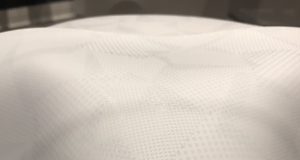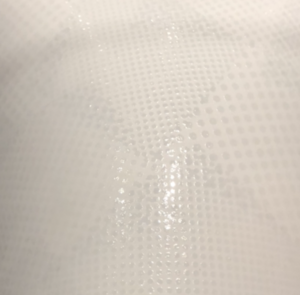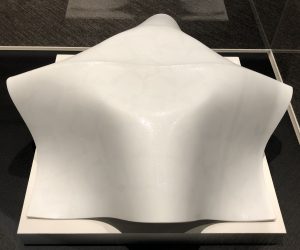
In a gallery filled with ornate, heavy vases and finely painted porcelain, Nagae Shigekazu’s (Japanese, b. 1953) “Object” (c. 1992) was especially eye catching (fig. 1). Compared to the solid delicacy and traditional nature of most of the works in the Colors Across Asia gallery, “Object” was refreshing and expressed fine delicacy in a completely different manner than most of the pieces that surrounded it. Like a spacecraft out of a sci-fi film, Shigekazu’s glazed ceramic work looked as if it had just touched down, and was lightly and effortlessly resting in a foreign and outdated environment, as its corners act as legs to allow the center of the work to seamlessly hover over the ground (fig. 2).
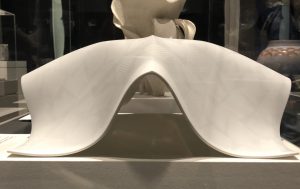
The work appears to be made from a single sheet of clay that could have been placed over a cylindrical object and set to dry in order to get its shape. There is evidence of this through the subtle, round indention of the top of the work (fig. 3). Shigekazu may have pressed the four corners down in order to make the work stable and then later removed the cylindrical support. This action also created the tunnel-like edges adjacent to the corners, but, depending on how dry the clay used was, may have needed extra support to maintain their height and identical shapes (fig. 4). The result is a tent-like structure with no base that almost appears as if it floating in space due to its thin form and light color, giving a weightless look.
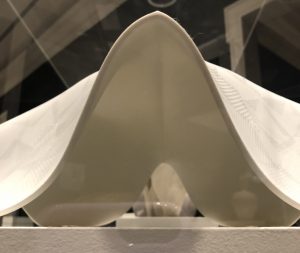
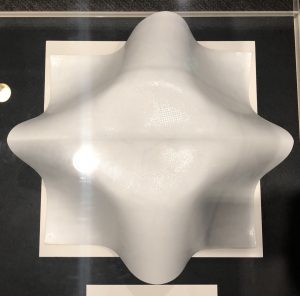
There is a puzzling seam in the ceramic sheet running through the center. This seem was likely not made by manipulating the work from the top only by a method like pinching because it can also be seen in the underbelly of the work (fig. 4). It diminishes the works radial symmetry, making it so it only has mirroring symmetry with the seam as the axis. It creates a sort of point in the center of the work and in the center of the two, tunnel-like edges across from each other. This disrupts the overall unity of the work.
The work is unified in its only decoration on the top of the piece, which is the application of glaze in dotted patterns at different angles and varying sizes of dots (fig. 5). There is no pattern on the underbelly. The use of this rounded dots in a pattern created a large, geometric pattern that contributes to the overall futuristic look of the work. The pattern is not completely uniformed, however, as it overlaps in some areas, creating a jumbled section of overlapping glaze spots (fig. 6). To achieve this, the artist must have uses a stamp that has the ability to bend to embrace the curves of the work because the shape of “Object” would have already been achieved and finalized with the first firing, which would be before glaze would have been applied. The work recalls the delicacy of traditional Chinese porcelain while conveying a modern, even futuristic, feel through its clean, streamline design and weightless impression.
